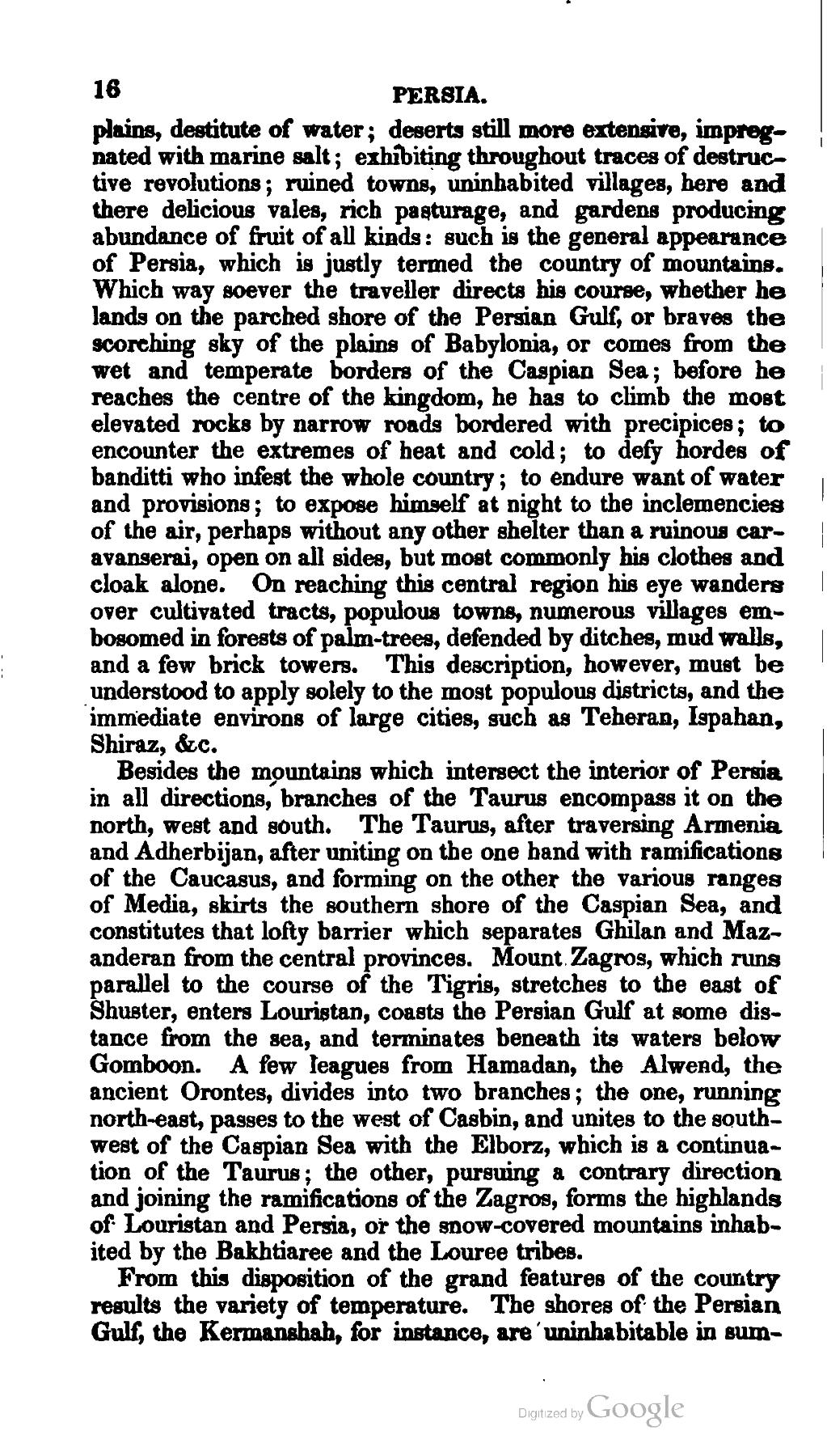plains, destitute of water; deserts still more extensive, impregnated with marine salt; exhibiting throughout traces of destructive revolutions; ruined towns, uninhabited villages, here and there delicious vales, rich pasturage, and gardens producing abundance of fruit of all kinds: such is the general appearance of Persia, which is justify termed the country of mountains. Which way soever the traveller directs his course, whether he lands on the parched shore of the Persian Gulf, or braves the scorching sky of the plains of Babylonia, or comes from the wet and temperate borders of the Caspian Sea; before reaches the centre of the kingdom, he has to climb the most elevated rocks by narrow roads bordered with precipices; to encounter the extremes of heat and cold; to defy hordes of banditti who infest the whole country; to endure want of water and provisions; to expose himself at night to the inclemencies of the air, perhaps without any other shelter than a ruinous caravanserai, open on all sides, but most commonly his clothes and cloak alone. On reaching this central region his eye wanders over cultivated tracts, populous towns, numerous villages embosomed in forests of palm-trees, defended by ditches, mud walls, and a few brick towers. This description, however, must be understood to apply solely to the most populous districts, and the immediate environs of large cities, such as Teheran, Ispahan, Shiraz, &c.
Besides the mountains which intersect the interior of Persia in all directions, branches of the Taurus encompass it on the north, west and south. The Taurus, after traversing Armenia and Adherbijan, after uniting on the one hand with ramifications of the Caucasus, and forming on the other the various ranges of Media, skirts the southern shore of the Caspian Sea, and constitutes that lofty barrier which separates Ghilan and Mazanderan from the central provinces. Mount Zagros, which runs parallel to the course of the Tigris, stretches to the east of Shuster, enters Louristan, coasts the Persian Gulf at some distance from the sea, and terminates beneath its waters below Gomboon. A few leagues from Hamadan, the Alwend, the ancient Orontes, divides into two branches; the one, running north-east, passes to the west of Casbin, and unites to the south-west of the Caspian Sea with the Elborz, which is a continuation of the Taurus; the other, pursuing a contrary direction and joining the ramifications of the Zagros, forms the highlands of Louristan and Persia, or he snow-covered mountains inhabited by the Bakhtiaree and the Louree tribes.
From this disposition of the grand features of the country results the variety of temperature. The shores of the Persian the Kermanshah, for instance, are uninhabitable in sum-
